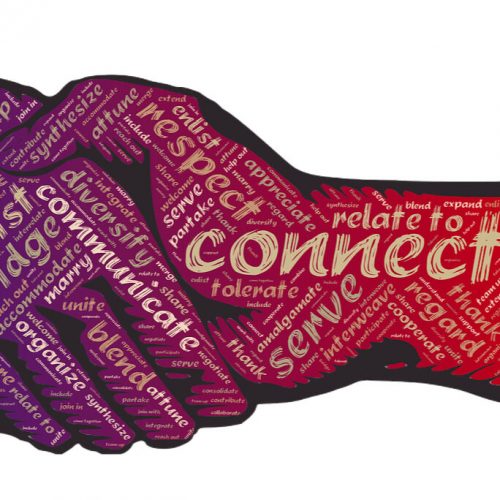
How to: Bridge the Language Gap
Dear Pam,
For many, the idea of moving to or even simply traveling to a country where the language is different from their own is intimidating. It’s not surprising that, as a species that craves connection, we fear what may happen if we are not able to communicate with others. Although we understand this anxiety and have felt it ourselves at different points in our lives, we are confident that if you keep in mind these tips and tricks for bridging the language gap, you will come away from potentially difficult situations happily surprised. What’s more, maybe you’ll even form a connection deeper than you ever would have imagined possible!
 But first, what is the language gap?
But first, what is the language gap?
Depending on who you ask or where you do your research, the ‘language gap’ can be defined in different ways. For the sake of this article and what we want to share with you we would describe the language gap as the lack of understanding that takes place in the space between different languages and cultures.
Relating this directly to Spain and our (generally) English-speaking readers, that is to say that a large language gap exists when someone who speaks Spanish but understands no English interacts with someone who speaks English but understands no Spanish. A smaller language gap exists if one of the two people is able to understand the other’s language. And a smaller still language gap exists if both people can communicate in the other’s language.
Of course, the small language gap of speakers who are proficient in both languages is much easier to deal with than the gap when neither can speak the other language. However, it is important to point out that the language gap can still exist (just as the cultural elements of the language can come into play when Americans communicate with Brits, when Spaniards communicate with Argentinians, etc).
 How can we bridge the language gap?
How can we bridge the language gap?
Once we understand that a language gap exists, the common reaction is to try to fill it with some common ground so that one (or both) of the speakers can ‘cross over’ the gap. Then, communication and understanding can be improved. At the same time that this article is all about forming a bridge of that sort we would also encourage you, first and foremost, to recognize and celebrate the existence of the language gap. Instead of immediately labeling it a problem, can you see some good in it?
It’s really cool that you’ve gotten yourself into a place or situation in which this language gap has become apparent! Likely, you’re exploring the world, trying to make your way in a different country, meeting someone else who is doing one of those things, or interacting virtually with someone from a different part of the globe. This experience in and of itself is a blessing and an opportunity to grow. It can allow us to connect with others in a way that would otherwise be impossible. Simply take one moment to honor the beauty of that—and take a reflective deep breath while you’re at it. This can make all the difference!
Once you’ve given yourself and the other person some kudos and grace (likely just in your own mind if you can’t quite communicate with the other person) we recommend you implement one or many of the following tricks.
 Tips for bridging the language gap:
Tips for bridging the language gap:
1.) Rely on Body Language: This may be so basic that you are already starting to do it without realizing. However, mindfully using your own body language as well as reading into the body language of others can help you grasp what it is they are trying to communicate. This may make you feel like a child or a mime but take yourself lightly and laugh through the process if it helps.
There is a reason this is a go-to for many people in similar situations. Much (although not all) of body language is universal. At the very least, you can rest assured that laughter and smiling truly are shared among everyone. If you can manage to engage someone with a different language in a genuine laugh or exchange of smiles you’re already on the right path to understanding each other better.
Pro-tip: We know that not all gestures are in fact universal and it is possible to unintentionally use a gesture that is inappropriate in the other person’s culture. If this happens, try not to sweat it! Chances are, they will understand you didn’t know what it meant. You can read more about recovering from such mishaps here.
2.) Use Simple Words: This could be as easy us choosing the title “use simple words” instead of “employ simplistic vocabulary.” The two phrases convey the exact same meaning and, while the second one may sound more academic, the first one is more manageable for someone who may have limited English.
 This can be especially helpful when dealing with languages that have some common roots, such as English and Spanish. Because both have words with Latin origins, using a common / basic / simple word in English is more likely to be similar to a word in Spanish than a complex one would be. Don’t believe us? The word for ‘common’ in Spanish is común and the word for basic is básico. On the other hand, the word for ‘simple’ is sencillo, but you could use simple (pronounce ‘sim-play’) in some cases, so it may also understood.
This can be especially helpful when dealing with languages that have some common roots, such as English and Spanish. Because both have words with Latin origins, using a common / basic / simple word in English is more likely to be similar to a word in Spanish than a complex one would be. Don’t believe us? The word for ‘common’ in Spanish is común and the word for basic is básico. On the other hand, the word for ‘simple’ is sencillo, but you could use simple (pronounce ‘sim-play’) in some cases, so it may also understood.
3.) Rely on Visuals: This actually goes alongside the tip about relying on body language but allows you to extend your reach to the objects and visuals around you. There is no shame in pointing to things or picking them up to emphasize your point. This is the way many sales interactions happen between people who share no common language. If you walk up to a frutería without knowing any Spanish, chances are you can eventually walk away with the fruits and veg you need—just point and gesture away!
As with anything, it is possible to come up against someone who will be frustrated that you don’t speak their language and who will therefore want to make the exchange as difficult as possible. However, by taking yourself lightly, laughing along the way, and even giving indications of apologies for your lack of knowledge of their language, you will usually find other people to be helpful.
 4.) When possible, learn a few key words of their language: This tip is especially useful if you will be visiting another country or if you have time to anticipate coming into contact with someone who does not speak your language. Knowing how to simply say ‘hello,’ ‘sorry,’ and ‘thank you’ can go a long way. We don’t always have the time or the means to learn a whole new language but if you will be traveling in Spain it would serve you well to practice your ‘hola,’ ‘lo siento,’ ‘gracias,’ and similiar lingo.
4.) When possible, learn a few key words of their language: This tip is especially useful if you will be visiting another country or if you have time to anticipate coming into contact with someone who does not speak your language. Knowing how to simply say ‘hello,’ ‘sorry,’ and ‘thank you’ can go a long way. We don’t always have the time or the means to learn a whole new language but if you will be traveling in Spain it would serve you well to practice your ‘hola,’ ‘lo siento,’ ‘gracias,’ and similiar lingo.
It’s important to note that this is not actually because the other people won’t understand if you say ‘hello’ (if it was the one word you learned in their language, it’s quite possible they learned it in yours too). However, it is a small gesture to show that you care, that you’ve put forth some effort to meet the other person in the middle, and (especially if you are the one traveling in a foreign country) that you want to honor the other person’s culture and language.
Pro-tip: We’ve focused on using this tip when it may result in the only words in common you have. However, this can also help you make a good first impression when meeting someone who has mastered your language. For example, if a foreign business associate comes to a meeting in your country it would likely be well-received if you greeted them in their own language or with a gesture that is common in their country out of respect for their culture.
 5.) Search for / Create common ground: This trick is a bit more intangible than the others but the usefulness of it is potentially greater. When dealing in transactional communication, like the example of the frutería above, your interaction is likely to be short-lived and measurable. That is to say it was either successful (you got the right fruit) or not (you didn’t).
5.) Search for / Create common ground: This trick is a bit more intangible than the others but the usefulness of it is potentially greater. When dealing in transactional communication, like the example of the frutería above, your interaction is likely to be short-lived and measurable. That is to say it was either successful (you got the right fruit) or not (you didn’t).
However, some of the most beautiful moments when bridging a language gap come not out of a successful exchange but of a forged connection. If you can find something you have in common with the person you are trying to communicate with (a shared love for food, music, and/or family are often good bets), you are much more likely to be able to communicate with them on another level. In general, we as humans like it when we have something in common with someone and we are therefore more likely to be empathetic towards them. This often results in both people being more willing to be patient and care about the success of the communication.
Pro-tip: This tactic may not reap immediate benefits and therefore will not be so useful in a one-off conversation, but it’s ideal if you’re hoping to form a lasting connection, even if someone doesn’t speak your language. Read further about that here.
Perhaps most importantly,
6.) Accept that you will not fully understand each other: The best advice we could give you is to accept that you probably won’t reach a level of complete understanding and you don’t NEED to in order to communicate with someone. Sure, it would be ideal to understand every word of what someone says to you. But when that’s not possible, the important thing is to be able to understand most of it and still be able to interact with, help, or be helped by the other person.
Some of the strongest bonds are actually formed between people who don’t speak the same language almost BECAUSE they don’t speak the same language. When you need to rely more on other aids—like body language, gestures, and signals of your feelings—you learn to communicate in other, sometimes deeper ways than using language.
What are you experiences bridging the language gap? Have you put any of these tips to use in the past? Which one that may be new to you are you most excited to try? Let us know about your experiences down below!
Sincerely,
Spain





